Health Promotion Program: Planning Teenage Obesity in Casey, Australia
VerifiedAdded on 2022/08/22
|5
|865
|18
Report
AI Summary
This report outlines a health promotion program designed to address teenage obesity in the city of Casey, Australia, targeting individuals aged 12-18. The program aims to establish a plan to reduce obesity cases among teenagers by promoting healthy eating habits, increasing physical activity through active transport and sports, and identifying biological, genetic, and cultural factors contributing to obesity. The program's SMART goal is to increase health eating and physical activity. The objectives include promoting teenage health and well-being, supporting healthy food options, and implementing strategies to prevent and limit the consequences of obesity. Actions include conducting workshops, encouraging physical activities, and launching campaigns to promote healthy eating habits. The timeline for the plan is approximately three months for initial sensitization, with an evaluation conducted after six months to assess the achievement of goals and objectives. The report also acknowledges potential challenges, such as overreliance on cars and resistance to dietary changes, while providing references to relevant research and resources.
1 out of 5
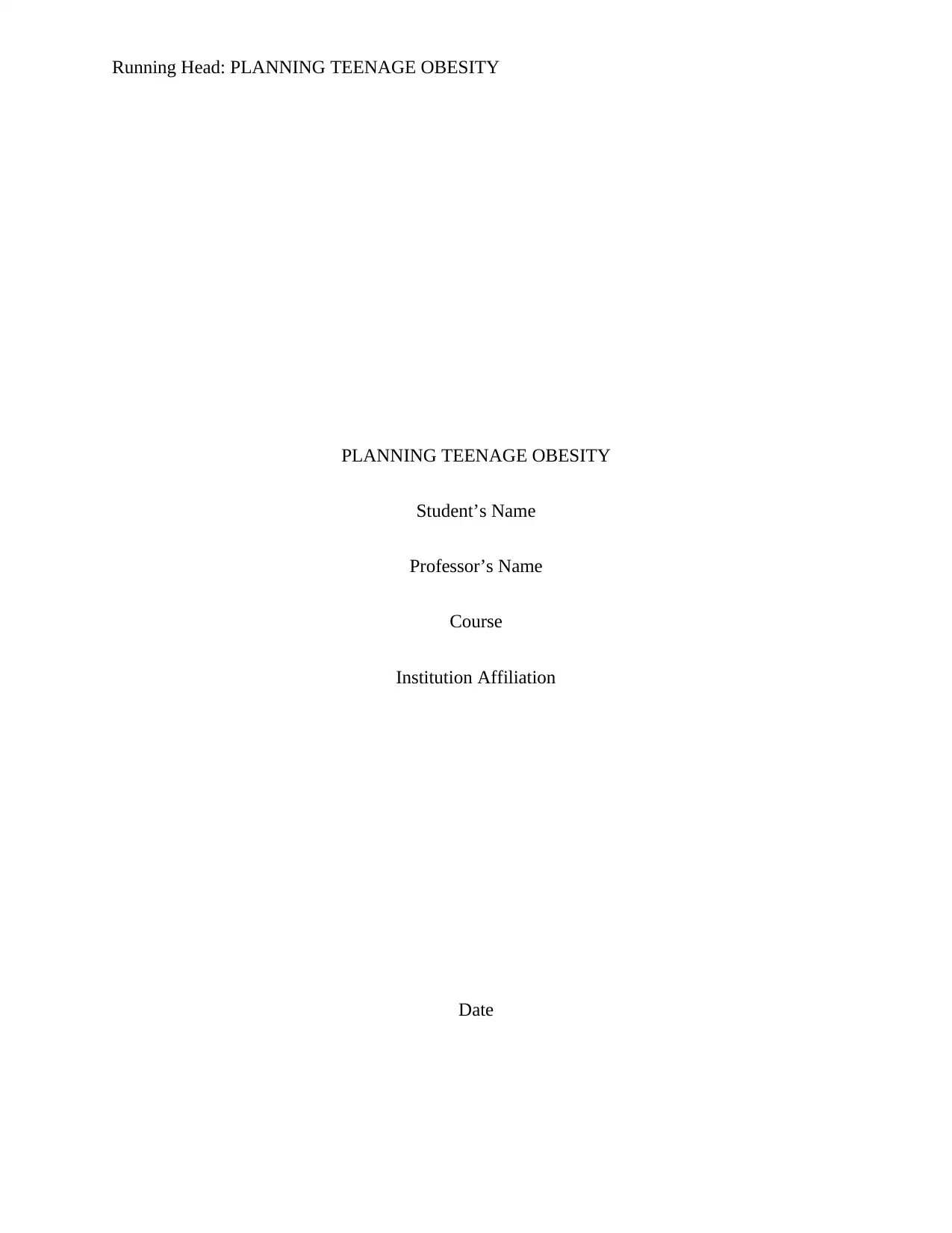
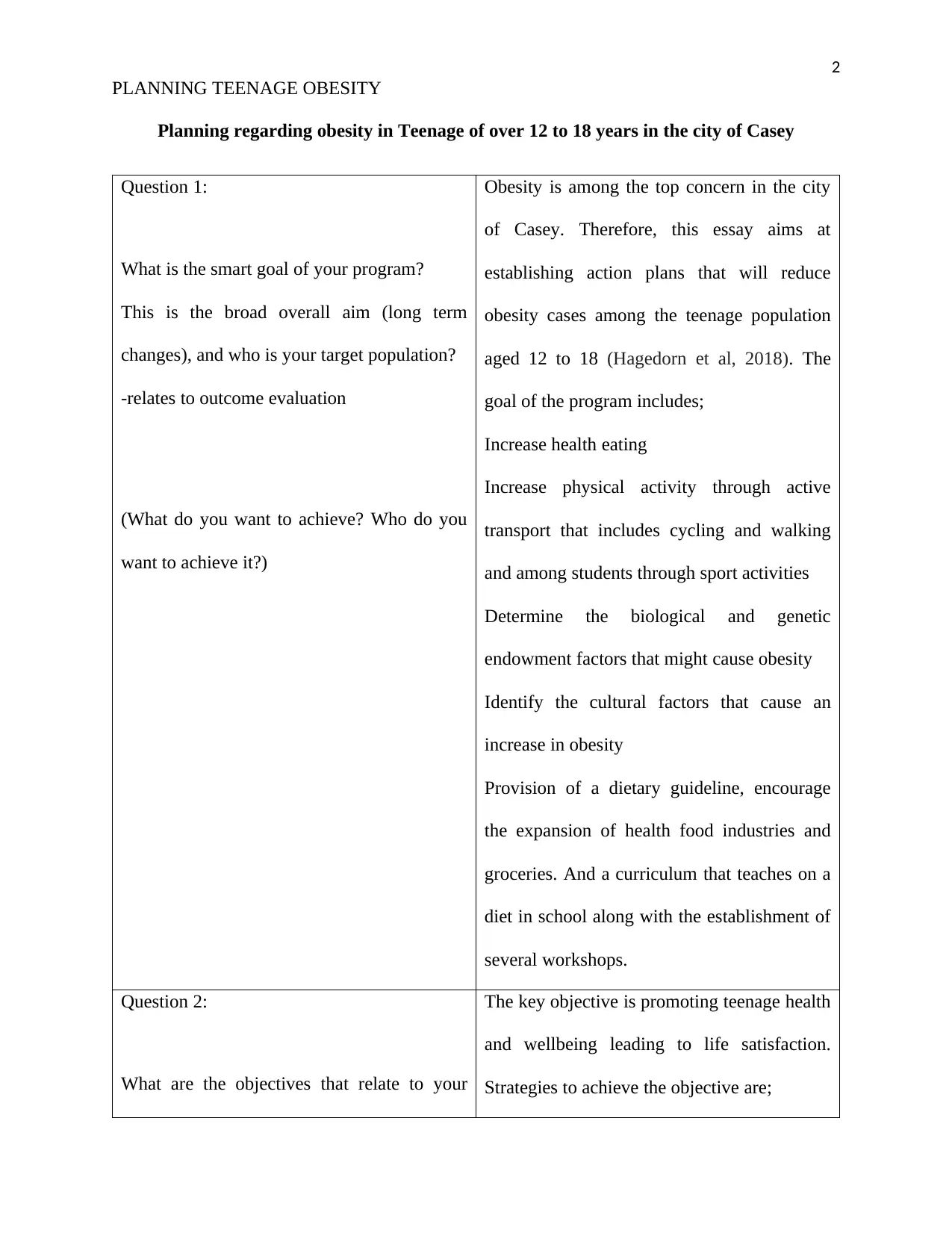
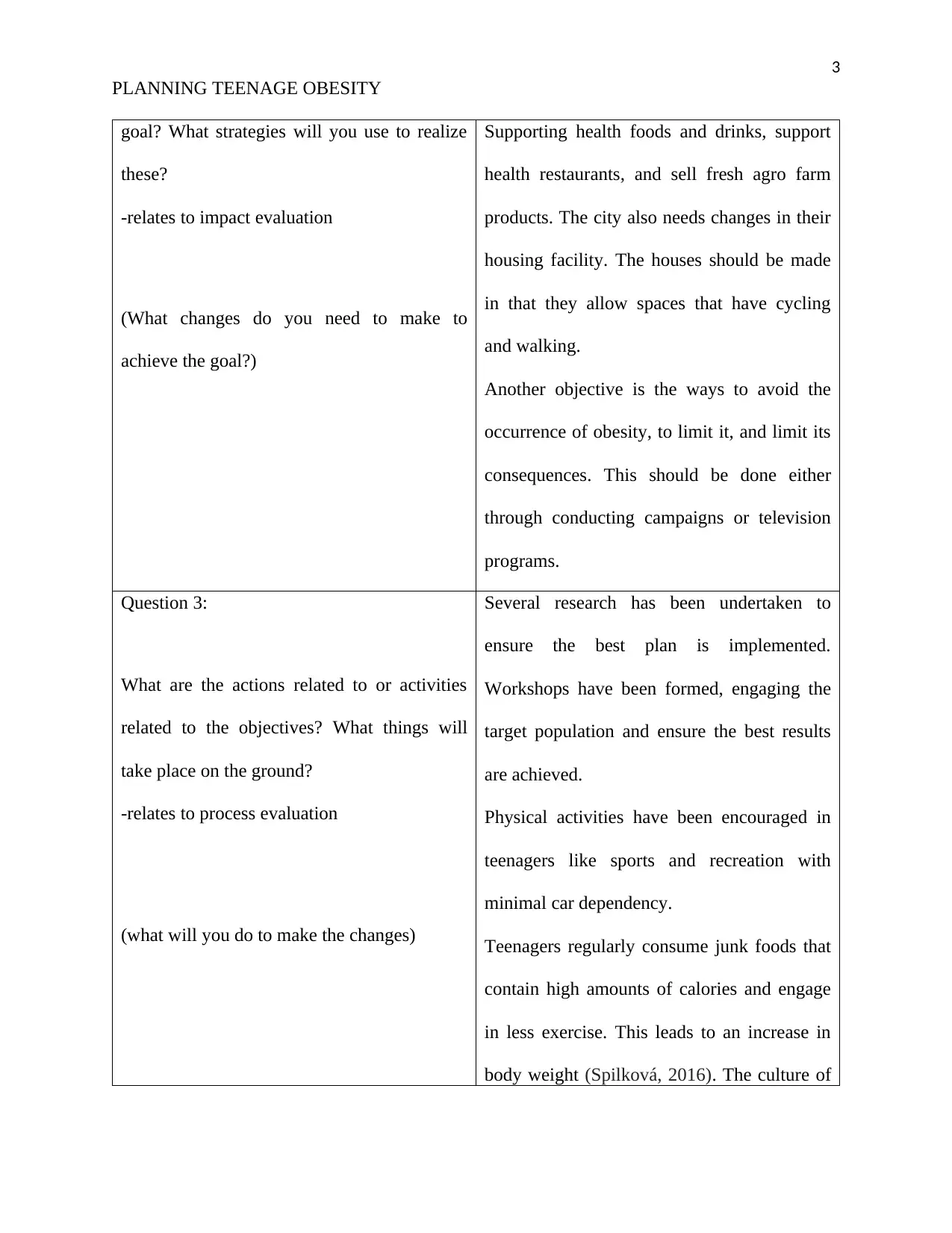

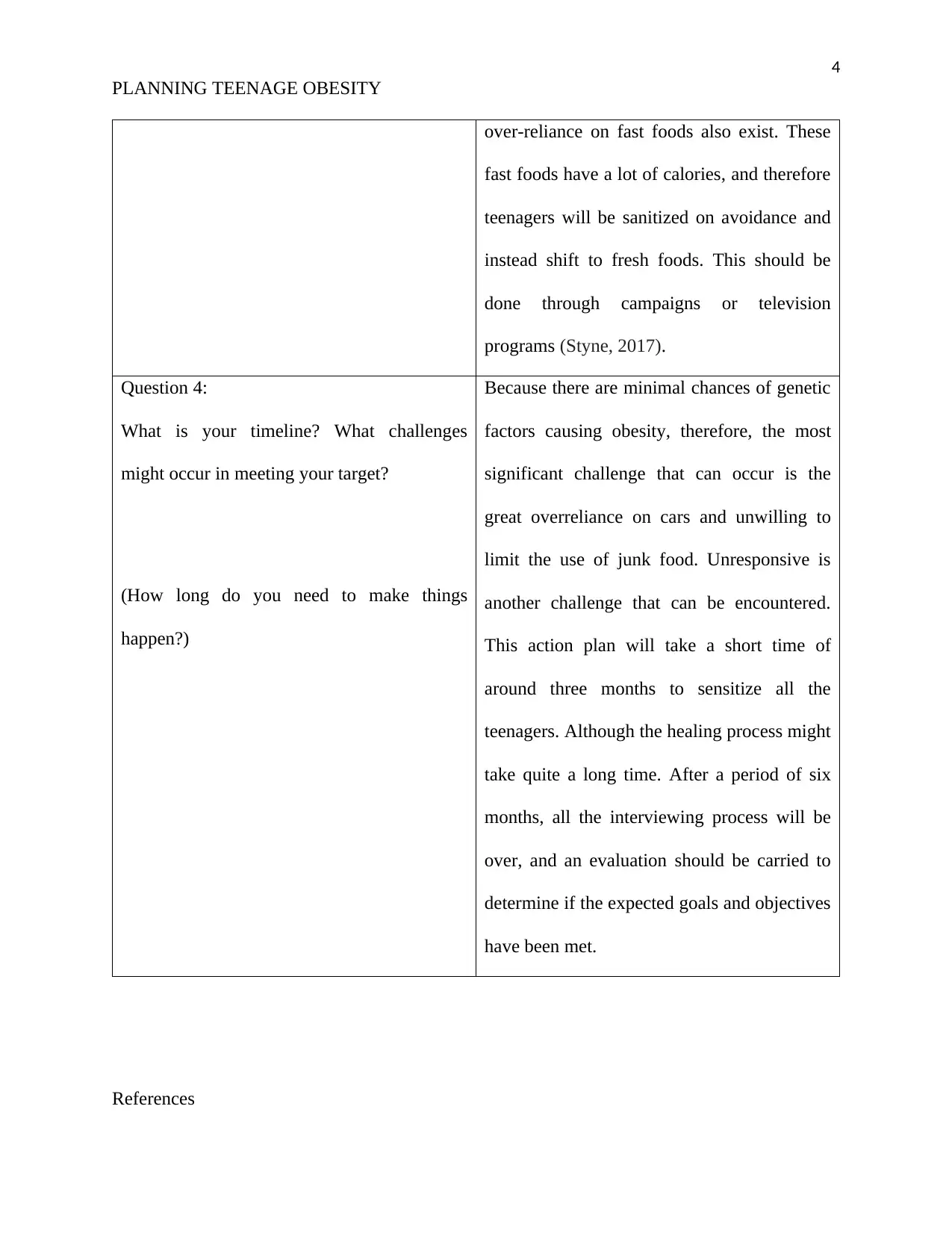
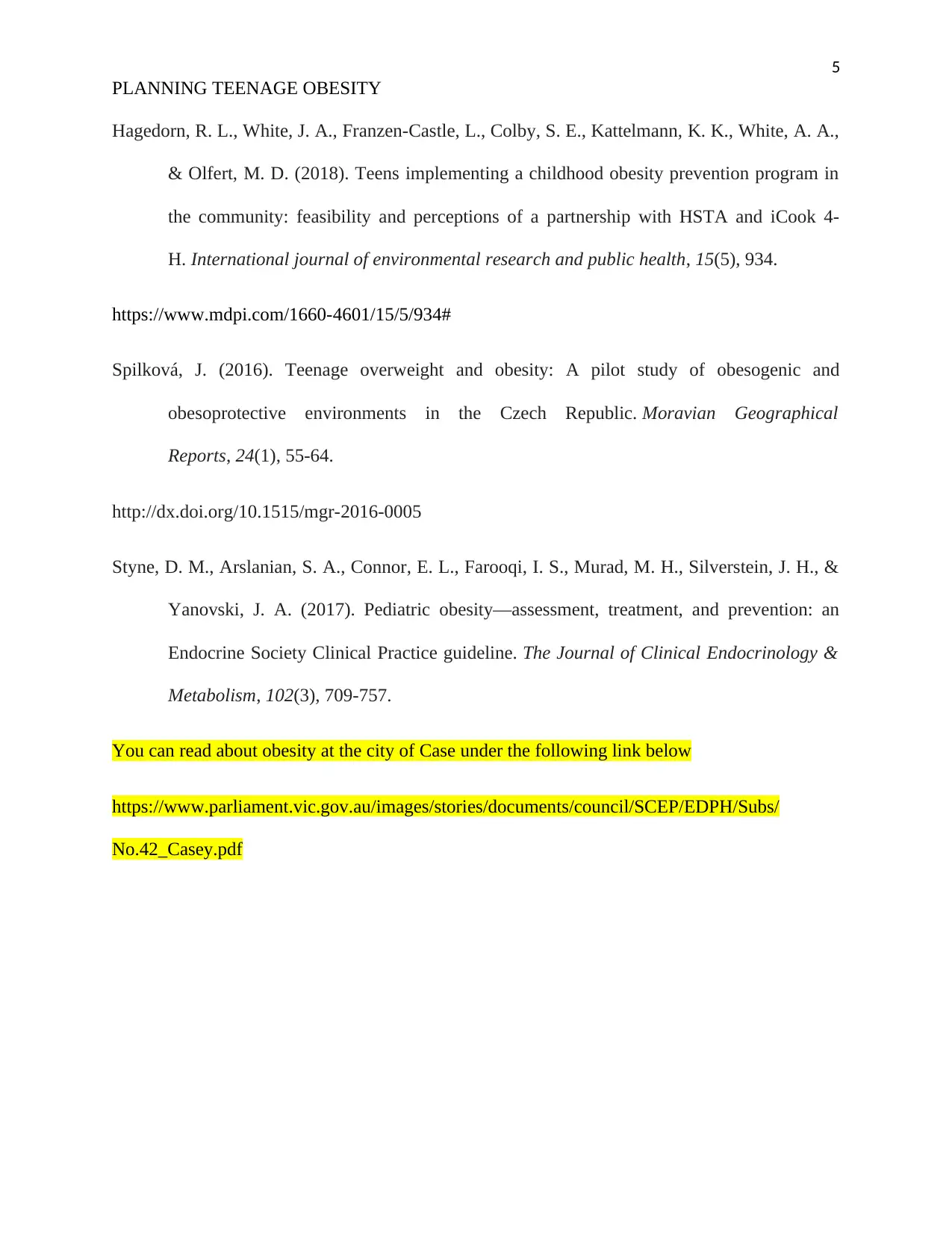






![[object Object]](/_next/static/media/star-bottom.7253800d.svg)